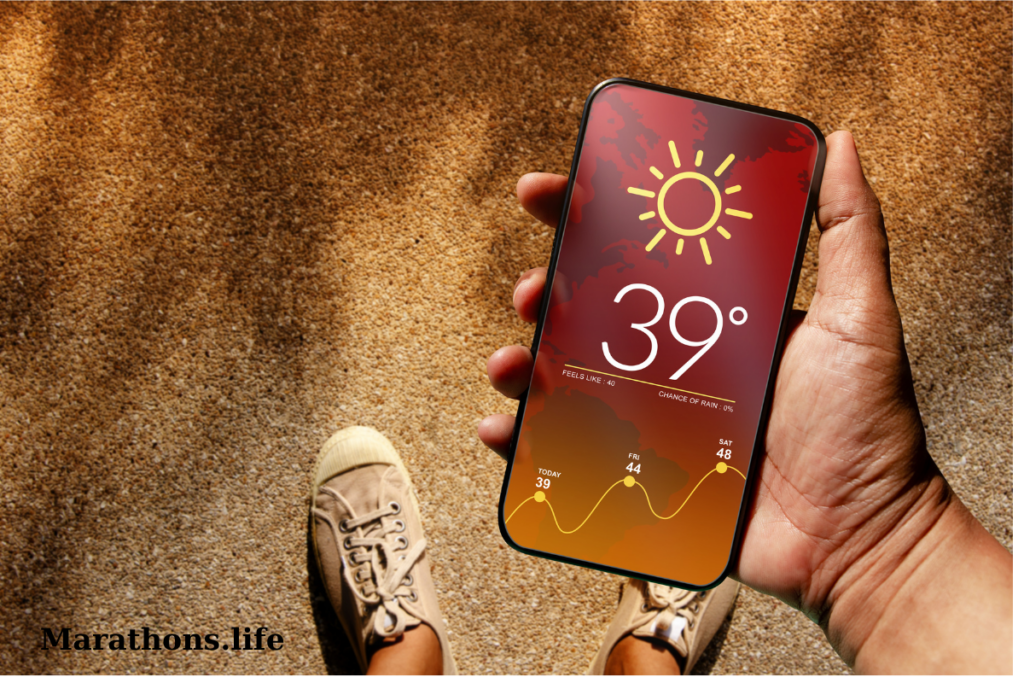Running isn’t about putting one foot in front of the other. It’s about finding the right conditions to make each stride feel effortless. Know how temperature affects your run, whether you’re a beginner or a marathoner. It’s key to unlocking your full potential. This article explores the effects of temperature on runners of all levels.
Finding the best temperature for running is not about the weather app. It’s about finding the range where your body performs best. It must keep you comfortable for miles.
Best Temperature Ranges for Running
1. Ideal Temperature Range
– For beginners: Start with 60-70°F (15-21°C) for a comfortable introduction to running.
– Casual runners: Aim for 50-60°F (10-15°C) to strike a balance between warmth and coolness.
– Competitive runners: For peak performance, run in 45-55°F (7-13°C). It avoids overheating and maintains stamina.
2. Seasonal Considerations
– Summer: Early mornings or late evenings provide relief from scorching temperatures. Ideal range: 60-70°F (15-21°C).
– Winter: Layer up to stay warm, aiming for temperatures around 30-40°F (-1 to 4°C).-Spring and fall have ideal running weather: 50-60°F (10-15°C).

Effects of Temperature Extremes
1. Running in Hot Temperatures
– Challenges: heat exhaustion, dehydration, and potential heat stroke.
– Precautions: Stay hydrated, wear breathable clothes, and run when it’s cooler.
2. Running in Cold Temperatures
– Challenges: Risk of hypothermia and stiff muscles.
– Benefits: Improved endurance and enhanced calorie burning.
– Tips: Layer up with thermal gear, protect exposed skin, and warm up indoors before venturing out.
Adjusting Your Running Strategy
Flexibility is key when tackling temperature variations:
– Adapt Pace: Adjust your running pace to match the temperature and conditions.
– Hydration: Maintain hydration levels regardless of temperature to prevent performance dips.
– Nutrition: Fuel your body before and during runs to sustain energy.
Considering climate and location:
Climate impacts your running experience.
– Urban Areas: Concrete and asphalt can trap heat, raising local temperatures.
– Coastal regions: Moderate temperatures with higher humidity levels challenge runners.
– Mountainous terrain: variable temperatures and reduced oxygen levels affect performance and adaptation.
Clothing and gear for different temperatures.
1. Hot Weather Gear
– Essentials: lightweight, moisture-wicking fabrics, hats, and sunscreen.
– Safety: Wear reflective gear for visibility during early morning or evening runs.
2. Cold Weather Gear
– Must-haves: thermal layers, gloves, hats, and wind-resistant outerwear.
– Performance: Consider compression gear for muscle support and warmth.
Scientific Insights and Research
Studies underscore the temperature’s impact on running.
– Optimal temperatures enhance cardiovascular efficiency and reduce muscle fatigue.
– Cold weather running can boost mental resilience and metabolism.
Personal Experiences and Insights
Real-life stories offer valuable lessons.
– Tips from seasoned runners on adapting to varying temperatures.
– Challenges overcome and personal milestones achieved through temperature-aware running.
Finding the best running temperature isn’t about comfort. It’s about finding conditions that inspire and drive you. Align your running routine with your temperature preferences. This will boost your performance and enjoyment. You’ll achieve your fitness goals with greater satisfaction.
Embark on a journey of exploration. Experiment with different temperatures, gear, and strategies. Find what works best for you. Embrace the challenge of running in diverse conditions. Each run, at the right temperature, makes you a stronger, more resilient runner.
